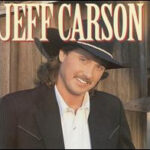Belly dance, unlike some other dance genres, places significant importance on overall presentation, including hair. For belly dancers, performance hair isn’t just an afterthought; it’s a crucial part of the costume and the visual impact. If you’re venturing into belly dance performances, it’s time to consider how your hair contributes to your stage presence, just as much as your movements and hip work.
The classic image of a belly dancer often includes voluminous, thick, and often curly hair. However, many dancers, like myself, don’t naturally have this type of hair. My own hair is fine, straight, and can be oily, the complete opposite of the archetypal “belly Dance Hair.” It struggles to hold a curl and has become thinner over the years.
Coming to terms with my naturally fine hair took time, but discovering hair extensions has been a game-changer. Many dancers enhance their natural hair with extensions to achieve the desired look. While some dancers have broken the mold with chic short styles or sleeked-back looks, like Rosa Noreen’s pixie cut or the slicked-back buns in Suhaila Salimpour’s Enta Omri, big, beautiful hair remains a hallmark of belly dance.
Wearing hair extensions specifically for dance performances presents unique challenges. The hair needs to stay secure through various movements, from hair flips to fast spins. I’ve experimented with numerous temporary hair extension types to find what works best. Here’s what I’ve learned about choosing the right dance hair extensions.
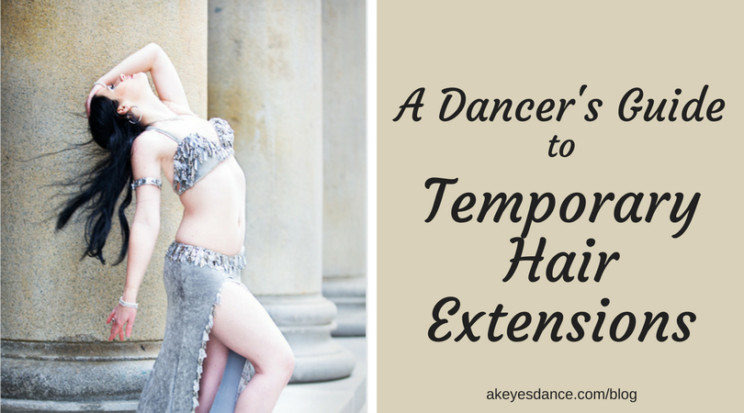 Dance hair extensions for belly dance performance
Dance hair extensions for belly dance performance
Dance hair extensions are essential for creating a full, voluminous look for belly dance performances. Photo by The Dancer’s Eye.
Exploring Temporary Dance Hair Extension Options
While all hair extensions are technically temporary to some extent, as they eventually need adjustments or replacement, I’ll focus first on the more readily temporary types suitable for dancers. Later, I’ll touch upon my experience with semi-permanent extensions, like the Perfectress extensions I opted for before the Bal Anat 50th Anniversary tour.
Understanding Hair Extension Terminology: When you start shopping for dance hair extensions, you’ll encounter terms like “Yaki,” “Remy,” “virgin,” and “cuticle hair.” “Yaki hair” refers to hair fibers, both synthetic and human, designed to mimic the texture of Afro-Caribbean hair. It’s typically slightly thicker and coarser than non-Yaki hair. Yaki hair comes in various styles, from straight to tightly coiled, and can be either synthetic or human.
“Remy hair” signifies that the hair is human, sourced from a single donor, and all hair strands are aligned in their natural direction (root to tip). This alignment helps prevent tangling and matting. Remy hair can be processed (dyed or styled) or unprocessed, often called “virgin hair.” Virgin hair is in its natural state, with the cuticle layer intact and without any chemical treatments like dyes or perms. The cuticle is the outermost layer of the hair shaft, providing protection against damage.
For the most natural look and feel, especially if you’re investing in human hair extensions, prioritize “Remy virgin cuticle hair.” If your natural hair texture is similar to Yaki, explore Yaki options for a seamless blend. Consider consulting a professional stylist to help you choose the best match, especially if your budget allows.
Temporary Hair Extensions for Dancers
Ponytail Falls for Instant Volume
Ponytail falls are arguably the simplest way to dramatically enhance your dance hair in seconds. You’ve likely seen variations of ponytail falls, and they were even readily available at mall kiosks in the 2000s. For dance, I recommend ponytail falls with a drawstring and small combs for secure attachment, rather than those with banana or jaw clips which can be less stable during movement.
These falls are commonly made from synthetic fibers, which are budget-friendly, but you can also find human hair versions for a more natural look and feel.
To apply, simply gather your own hair into a high ponytail, insert the combs of the fall around your ponytail base, and tighten the drawstring. Tuck the drawstring underneath the fall and secure with bobby pins if needed. Instantly, you have a full, stage-ready ponytail. For extra security, especially during energetic dance routines, bobby pins around the base of the fall are a good idea.
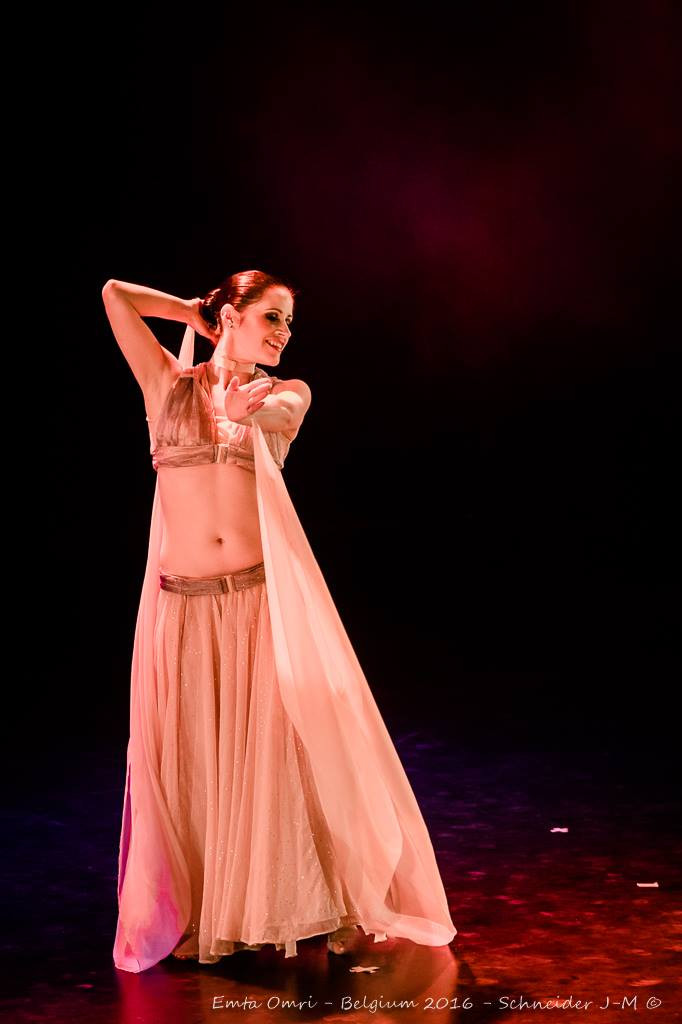 Belly dancer Abigail Keyes wearing a ponytail hair extension for performance
Belly dancer Abigail Keyes wearing a ponytail hair extension for performance
Even my bun looks voluminous thanks to a ponytail hair extension. Dance hair extensions can create dramatic styles quickly.
Clip-in Loose Extensions for Versatile Styles
Clip-in loose extensions were my go-to hair enhancers for many years. They come in two main types: one-piece falls that clip in at the back of your head, designed to be covered by your natural hair, and individual wefts that you clip in similarly. Both types use wig clips, which offer a surprisingly secure hold thanks to a small rubber strip that grips your hair.
I prefer using individual wefts. With practice, I can apply them securely in under 10 minutes. However, preparation is key. I always wash, dry, and style my natural hair beforehand. Before blow-drying, I apply Bumble & Bumble’s Styling Lotion for added body and a slightly tacky texture that helps the clips stay put. For performances where I anticipate sweating, Aveda’s Pure Abundance Hair Potion is fantastic. It absorbs sweat and oil while boosting volume. Lightly hairspraying the roots before clipping in the wefts also provides extra security.
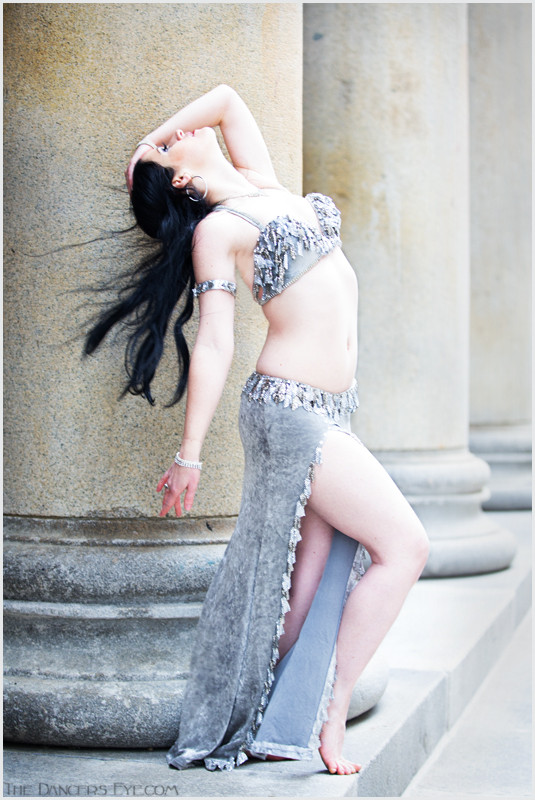 Abigail Keyes showcasing clip-in dance hair extensions
Abigail Keyes showcasing clip-in dance hair extensions
Clip-in hair extensions are a dancer’s secret weapon for achieving voluminous dance hair. Not my real hair, and I’m not ashamed! Photo by The Dancer’s Eye.
Half or Three-Quarter Wigs for Partial Coverage
Half or three-quarter wigs are excellent for adding volume and length without the weight and heat of a full wig. I’ve used these occasionally, particularly when performing as a Ghawazee with Bal Anat. If you’re not wearing a headband, you’ll need to blend your natural hair over the wig’s edge for a seamless look. Many dancers opt for a headband, which simplifies blending and eliminates the need for a perfect color and texture match between the wig and your own hair.
Full Wigs for Complete Transformation
Full wigs offer the ultimate versatility in dance hair. You can instantly change your hairstyle and color without any commitment. While I have limited personal experience with full wigs due to concerns about security during dance, many dancers rely on them.
If you’re investing in a full wig, especially for performance, consider human hair wigs. Synthetic wigs can sometimes have an unnatural shine that makes them obviously fake. Human hair wigs, although pricier, look more natural, last longer, and style more like your own hair. However, if you’re just experimenting with wigs, a less expensive synthetic option is a great way to start.
Princess Farhana, a fellow dancer, suggests shopping for full wigs while wearing full stage makeup. A wig can look drastically different against a made-up face versus your everyday look. Once you find a wig you love, consider having a hairstylist trim and shape it to best complement your face and desired style.
More Semi-Permanent Dance Hair Extension Options
Tape-in Extensions for Longer Wear
Tape-in extensions function similarly to clip-ins but use adhesive tape to attach to your natural hair. If you have oily hair like mine, tape-ins might not last as long. As noted in this article from Allure, professional installation is recommended and the process can be time-consuming.
Tape-ins are designed for extended wear compared to clip-ins, but their longevity can vary. They might not be ideal for very fine hair, as removal could potentially damage delicate strands. Oily hair can also cause them to slip more easily.
Beaded Wefts and Links: My Current Favorite
Beaded wefts and links are currently my preferred method for semi-permanent dance hair extensions. This spring, I decided to try them and found Sophia at Le Salon in Berkeley, California, through Yelp. She specializes in extensions for fine and thin hair and has been fantastic.
I currently use PerfecTress extensions, which blend so seamlessly with my natural hair that many people simply think my hair has grown remarkably long. And yes, it has – because I bought it!
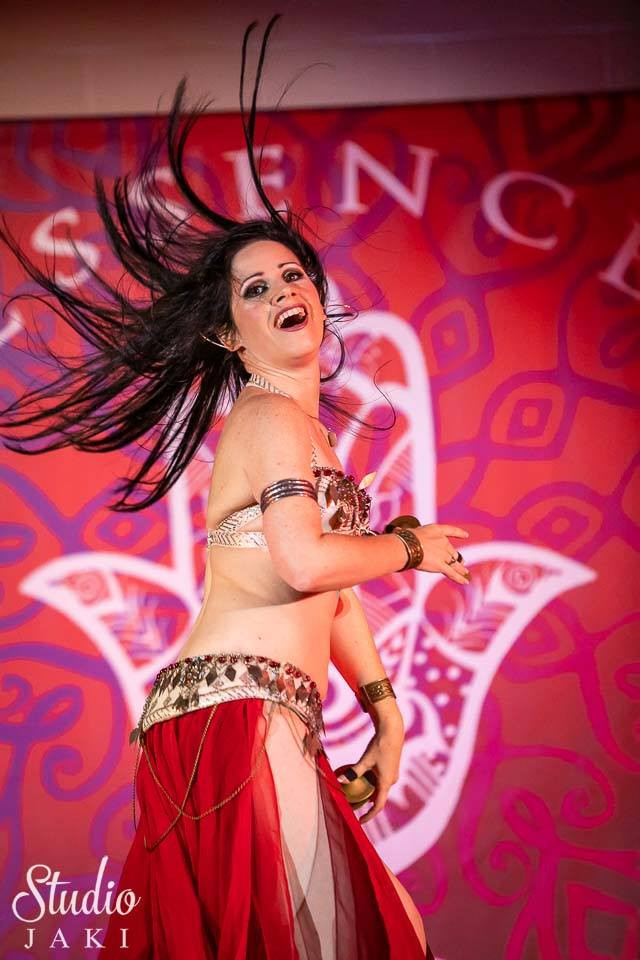 Belly dancer with beaded weft hair extensions
Belly dancer with beaded weft hair extensions
Is it natural volume or dance hair extensions? With beaded weft extensions, the secret is safe! No shame in enhancing your dance look.
In nearly nine months of wear, I’ve only had one link come loose, and the extensions have remained in excellent condition with minimal split ends and a healthy appearance. The best part is the natural feel and ease of care. I can wash and style my hair as usual. They are also the most comfortable extensions I’ve worn, with only initial scalp discomfort for a day or two after installation as my scalp adjusted to the added weight.
Where to Buy Your Dance Hair Extensions
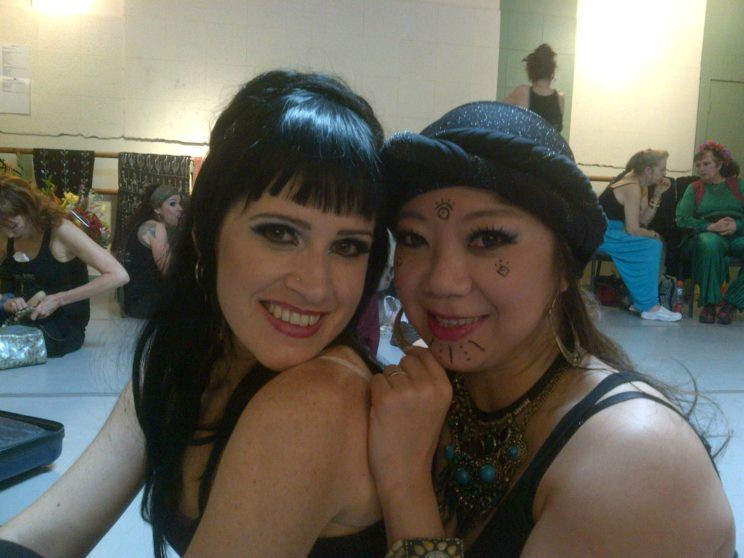 Dance hair extensions shopping guide
Dance hair extensions shopping guide
Clip-in bangs and ponytail falls are versatile dance hair options. Finding the right extensions might require a visit to a specialty wig shop. Photo by Angelica Wu.
For the best dance hair extensions, especially for color and texture matching, visiting a wig shop is preferable to online shopping. Matching texture is as crucial as color. Avoid overly thick extensions if you have naturally fine hair, as the contrast will look unnatural.
Finding a perfect match can be more challenging for lighter hair colors, but wig shop staff are usually very helpful in guiding you to the right extensions. While you’re there, you can also find affordable false eyelashes to complete your stage makeup look!
Human hair extensions with intact cuticles can be an investment, starting around $100 or more per set. My current extensions were a significant expense, but worth it for the quality and natural look. You can care for human hair extensions like your own hair, but use deep conditioner to prevent damage. Synthetic hair can be more challenging to maintain, as the fibers can stretch and tangle easily when washed and styled.
Have you tried hair extensions for dance? What types have worked best for you, and what would you avoid? Share your experiences in the comments below!
Save
Save

